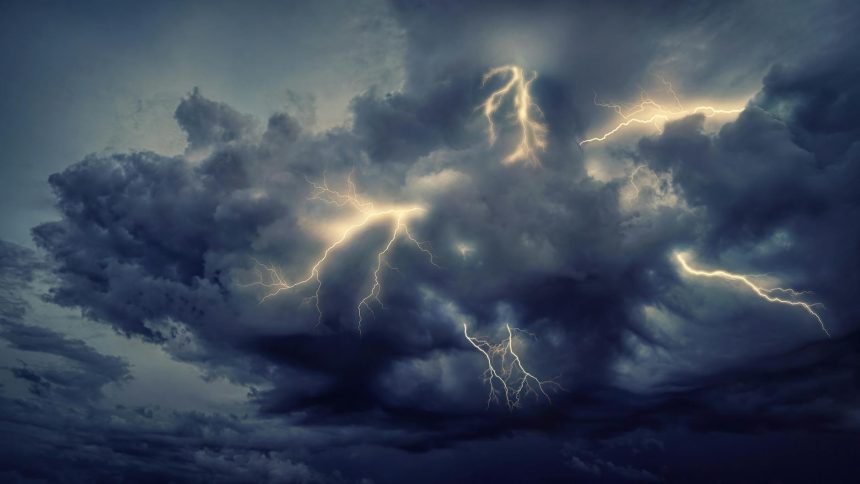severe-weather-threat-preparation
Severe Weather Threat: 7 Critical Steps to Prepare Your Home & Family Today
Is your region bracing for its first significant storm in months? The feeling of uncertainty when a severe weather threat looms can be unsettling. From sudden downpours to powerful winds, understanding and preparing for extreme weather events is not just important—it’s essential for your safety and peace of mind. This comprehensive guide will equip you with the knowledge and actionable steps to protect your home and loved ones when severe weather strikes.
Understanding Your Local Severe Weather Threat
Every region has its unique weather patterns, but a developing severe weather threat demands immediate attention. Knowing what to look for and what types of storms are common in your area can make all the difference in your preparedness.
Key Indicators of a Developing Threat
Weather forecasts often provide early warnings. Pay close attention to terms like “severe thunderstorm watch,” “tornado watch,” or “flash flood warning.” Meteorologists analyze atmospheric conditions, including temperature gradients, moisture levels, and wind shear, to predict potential hazards. Staying informed through official channels is crucial for your local weather preparedness.
Types of Severe Weather to Anticipate
Severe weather encompasses a range of dangerous phenomena. This can include intense thunderstorms with damaging winds, large hail, and frequent lightning. Tornadoes, while less common in some areas, represent a significant risk. Flash flooding, often a silent but deadly threat, can occur rapidly, even far from a storm’s center. Prepare for the specific risks prevalent in your local environment and regional outlook.
Preparing for an Impending Storm: A Step-by-Step Guide
Proactive preparation is your best defense against a severe weather threat. A well-thought-out plan can minimize damage and ensure your family’s safety during any severe storm timeline.
Before the Storm: Essential Preparations
Taking action before a storm hits can significantly mitigate risks. Develop a family emergency plan, including designated meeting spots and communication strategies. Secure outdoor items that could become projectiles in strong winds. Consider trimming trees near your home to prevent falling branches and potential property damage.
- Build an Emergency Kit: Stock non-perishable food, water, a first-aid kit, flashlights, batteries, and a weather radio.
- Charge Devices: Ensure cell phones, laptops, and power banks are fully charged in case of power outages.
- Review Insurance: Understand your home insurance policy regarding storm damage and coverage.
- Secure Documents: Gather important documents (IDs, insurance policies) in a waterproof, easily accessible container.
- Know Your Evacuation Routes: Plan primary and secondary routes if an evacuation becomes necessary, and practice them.
During the Storm: Staying Safe
Once a severe storm is underway, prioritize safety above all else. Stay indoors and away from windows. If a tornado warning is issued, move to an interior room on the lowest floor, such as a basement or closet. For flash floods, never attempt to drive or walk through floodwaters. Remember, “Turn Around, Don’t Drown,” as this is a critical safety tip.
- Seek Shelter: Move to the safest part of your home, typically an interior room or basement.
- Stay Informed: Continue monitoring official weather alerts using a battery-powered radio or charged device for weather updates.
- Avoid Windows: Flying debris is a major hazard during high winds and extreme weather.
- Never Drive Through Floodwaters: Just six inches of moving water can sweep a person off their feet, and two feet can carry away most vehicles.
After the Storm: Recovery and Assessment
The immediate aftermath of a severe storm requires caution. Check for injuries and provide first aid if needed. Avoid downed power lines and report them to authorities. Document any damage to your property with photos for insurance claims. Remain vigilant for secondary hazards like localized flooding or unstable structures, which can be part of the natural disaster recovery.
Tracking the Severe Weather Threat: Reliable Sources
Accurate and timely information is your most powerful tool against any regional severe weather event. Knowing where to get reliable updates can help you make informed decisions quickly.
Where to Get Real-Time Updates
Rely on official meteorological agencies and local news for the most accurate information. These sources provide critical updates, warnings, and safety instructions specific to your area. Avoid unofficial social media channels that may spread misinformation during a crisis.
- National Weather Service (NWS)/NOAA: The primary source for weather forecasts, watches, and warnings in the United States. Visit weather.gov for real-time data and comprehensive storm preparedness information.
- Local News Channels: Many local TV and radio stations offer dedicated weather teams and provide immediate, localized coverage and storm timeline details.
- Emergency Alert System (EAS) & Wireless Emergency Alerts (WEA): These systems deliver critical alerts directly to your television, radio, and mobile devices, ensuring you receive timely weather alerts.
- Reputable Weather Apps: Download official apps from trusted sources that provide push notifications for your location, enhancing your access to weather updates.
- Federal Emergency Management Agency (FEMA): Offers valuable resources and preparedness guides for all hazards. Explore their site at fema.gov/preparedness-all-hazards.
Interpreting Weather Alerts
Understanding the difference between a “watch” and a “warning” is vital. A watch means conditions are favorable for severe weather to develop in or near your area. A warning means severe weather is imminent or already occurring, requiring immediate action. Always take warnings seriously and follow official guidance to ensure your safety.
Facing a potential severe weather threat doesn’t have to be overwhelming. By understanding the risks, preparing proactively, and staying informed through reliable channels, you can significantly enhance your safety and resilience. Take action now to secure your safety and peace of mind.
© 2025 thebossmind.com
Prepare for any severe weather threat with our expert guide. Learn essential steps to secure your home, build an emergency kit, and track real-time storm updates for your region.
family preparing for severe weather, storm preparedness checklist, emergency kit, weather radar map, safe room during storm
Featured image provided by Pexels — photo by Johannes Plenio






